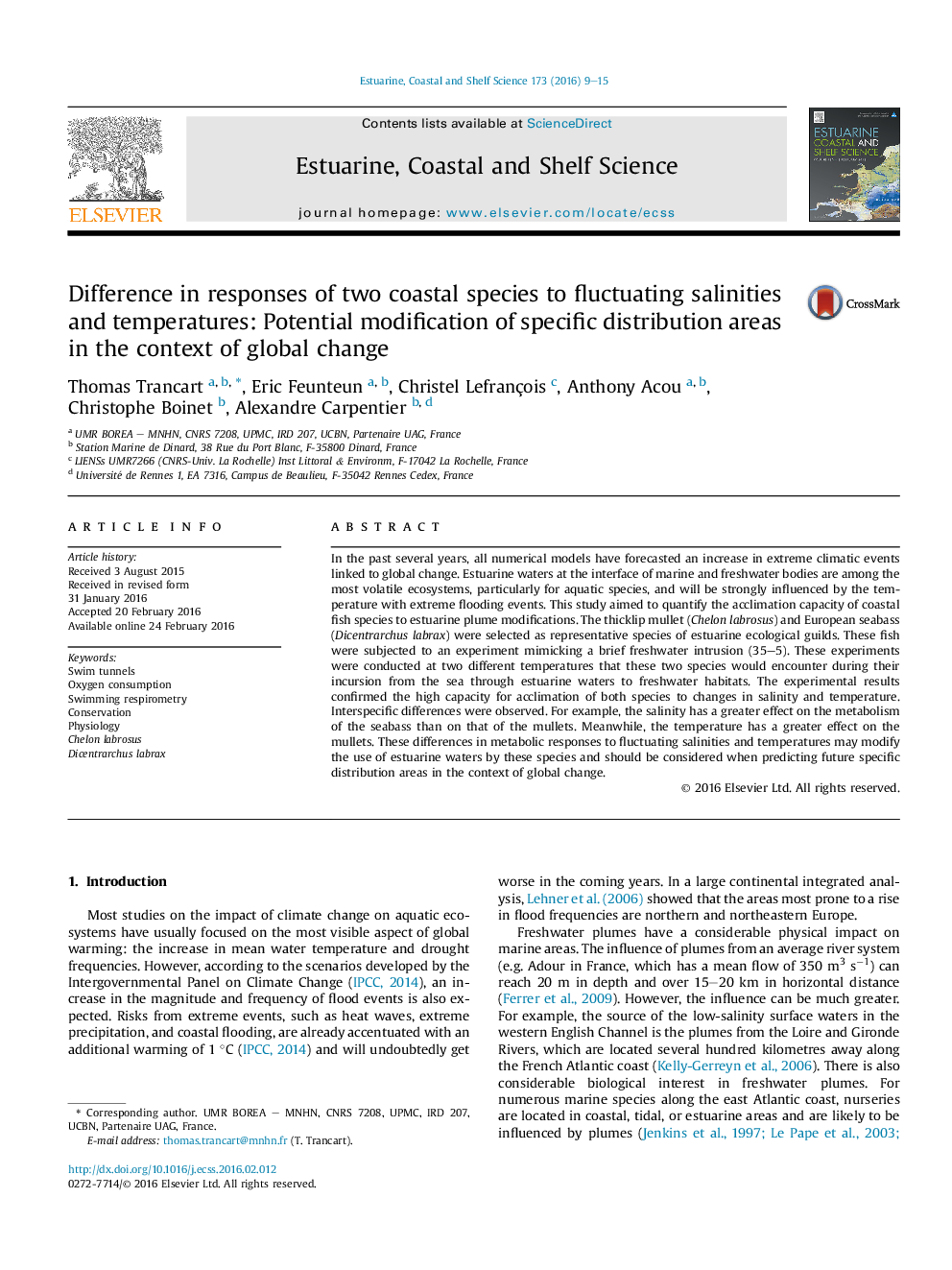| Article ID | Journal | Published Year | Pages | File Type |
|---|---|---|---|---|
| 6384486 | Estuarine, Coastal and Shelf Science | 2016 | 7 Pages |
Abstract
In the past several years, all numerical models have forecasted an increase in extreme climatic events linked to global change. Estuarine waters at the interface of marine and freshwater bodies are among the most volatile ecosystems, particularly for aquatic species, and will be strongly influenced by the temperature with extreme flooding events. This study aimed to quantify the acclimation capacity of coastal fish species to estuarine plume modifications. The thicklip mullet (Chelon labrosus) and European seabass (Dicentrarchus labrax) were selected as representative species of estuarine ecological guilds. These fish were subjected to an experiment mimicking a brief freshwater intrusion (35-5). These experiments were conducted at two different temperatures that these two species would encounter during their incursion from the sea through estuarine waters to freshwater habitats. The experimental results confirmed the high capacity for acclimation of both species to changes in salinity and temperature. Interspecific differences were observed. For example, the salinity has a greater effect on the metabolism of the seabass than on that of the mullets. Meanwhile, the temperature has a greater effect on the mullets. These differences in metabolic responses to fluctuating salinities and temperatures may modify the use of estuarine waters by these species and should be considered when predicting future specific distribution areas in the context of global change.
Related Topics
Physical Sciences and Engineering
Earth and Planetary Sciences
Geology
Authors
Thomas Trancart, Eric Feunteun, Christel Lefrançois, Anthony Acou, Christophe Boinet, Alexandre Carpentier,
